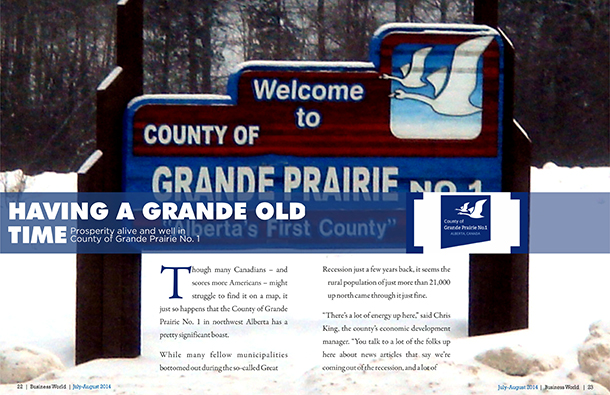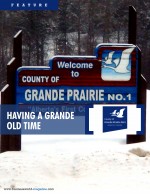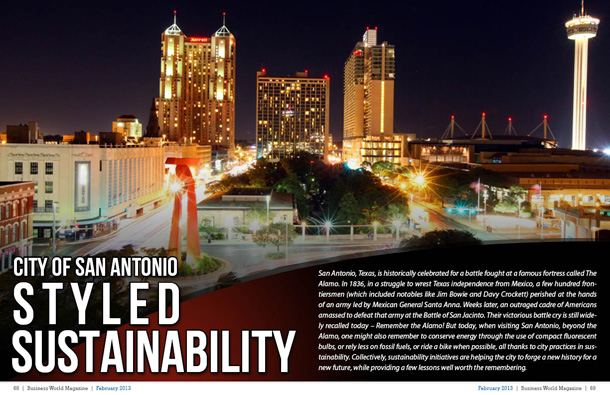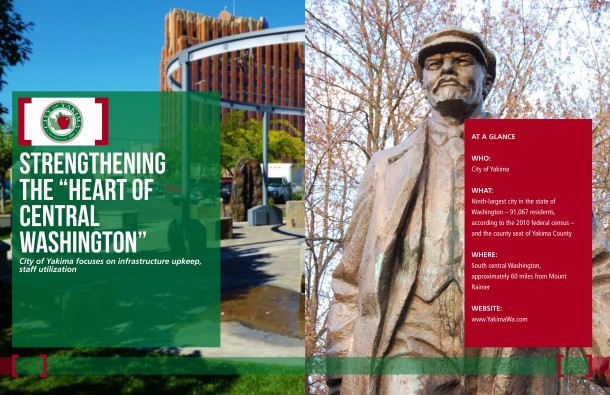
Having a Grande Old Time
Prosperity alive and well in County of Grande Prairie No. 1
Â

Though many Canadians – and scores more Americans – might struggle to find it on a map, it just so happens that the County of Grande Prairie No. 1 in northwest Alberta has a pretty significant boast.
While many fellow municipalities bottomed out during the so-called Great Recession just a few years back, it seems the rural population of just more than 21,000 up north came through it just fine.
“There’s a lot of energy up here,†said Chris King, the county’s economic development manager. “You talk to a lot of the folks up here about news articles that say we’re coming out of the recession, and a lot of them make the comments ‘What recession? When did we have a slowdown?’
“We’ve just been going full-steam here.â€
Indeed, the prolonged bottom-line success for Grande Prairie has come thanks to a diverse employment base that includes Peace Country Health (3,400 employees), several local school divisions and a regional function of the provincial government.
Alongside those private and public entities is a significant footprint for both the forestry and oil/gas industries, which includes Weyerhaeuser Canada and Canadian Forest Products along with Halliburton Canada, Precision Drilling, Schlumberger and Tri-Can Well Service.
“When we saw that downturn in the economy, a lot of it had to do with residential markets,†King said. “People here felt it if they were trying to sell a house or buy a house, because house prices did drop a bit. But for the most part, business carried on up here and there was a lot of growth in the oil and gas sector. We were fortunate that a lot of the licenses that companies had up here were coming due and they had to have so much investment into their fields to keep their licenses.
“Despite the fact that prices were in the tank, they were still drilling because they had to, to keep their rights to those fields. We benefitted from that.â€
Though rural in comparison to provincial brethren like Edmonton (five hours by car) and Calgary (eight hours), the county plays a role as a major oil-field service hub for the entire Peace Region – comprised of northwestern Alberta and northeastern British Columbia – which encompasses a significant geographic area that’s home to about 250,000 people within a 200-kilometerradius.
Most of the people that come for work in the region’s oil fields also live in the area, King said, which is different from other provincial oil locations like Fort McMurray, where workers will live in camps and head home to other places, with spending money in hand, on their days off. The presence of those people as full-time residents has been a lure for development in the county, which in turn has drawn even more people interested in the quality of life offered by Grande Prairie’s unique setting.
The population jumped 17.6 percent from 2006 to 2012, according to county-based census figures, and it’s up 35.2 percent from the nationwide census conducted in 2001.
“We have a lot of growth already. We’ve had a significant amount of industrial growth and residential growth both in the county,†King said. “Part of my focus is to try and attract some things differently. I’m focusing more on the commercial sector now than on industrial. Industrial is happening and it’s going to continue to happen and we’re very busy on that front.â€
King and his staff have reached out to the International Council of Shopping Centers (ICSC) and have also established connections with brokers and property management companies with an aim toward letting them know of the county’s high household-income statistics ($106,483), alongside a lower cost of doing business in Grande Prairie than they might find elsewhere in Canada.
The general provincial corporate income tax rate in Alberta is the lowest in the country, while the tax on manufacturing and processing is second only to Newfoundland and the small business rate is fourth behind Manitoba, Prince Edward Island and Saskatchewan. Additionally, the county is part of the North-South Trade Corridor stretching from the B.C. border to the U.S. border at Coutts, Montana.
“That’s something that attracts a lot of folks. Certainly in the retail sector, their ears certainly do perk up at that (household income) number,†King said.
“When we tell them the cost of living here is basically the same as Edmonton – with house pricing being comparable to Edmonton and cost of goods comparable, too – then they really start to get interested.â€
Still, it takes some education to realize the full northern potential, while sidestepping stereotypes.
“Retailers don’t understand the scale of the north,†he said. “They don’t realize that people will drive a much bigger distance in the north because there’s just no other option. It’s not unusual to be at the Costco here in town and see license plates from the Northwest Territories, and lots and lots of B.C. license plates, because we don’t have the (provincial) sales tax here.
“To people from Toronto, anything north of Toronto is far north. Then they come up here and they’re like ‘Wow, I never would have imagined you’d have this many amenities and this many services.’â€
Once they are pleasantly surprised by choices, King said, the surroundings sell themselves.
“It’s pretty country,†he said. “For most of the county, you have a good view of the Rocky Mountains. There’s a blend of agricultural lands and hills and forests. So it’s quite a variety of terrain as well, which is nice. On the weekends, if you want to go quad riding through the forests or in the mountains, that’s something you can do. It’s right there.â€
The timeline for a lot of the development now stretches out for the next five years, during which King estimates that the county population will swell upwards of 35,000. A new downtown section is being assembled from the ground up – something that he believes will continue to draw a flow of young professionals eager to mix their working careers with highly livable surroundings.
In fact, he’s living proof of how entranced newcomers to the area can become.
“It’s going to be a very vibrant economy here. I think we’re going to continue to see this as a very vibrant community,†he said. “I’ve worked in a wide variety of municipalities over the years. This is my first real rural municipality and it’s amazing. The growth that’s here and the vision of the council that’s in place here, the elected officials, they’re all for it and they’re super supportive of us achieving this.
“It’s exciting. Every day I get up and I’m anxious to get to work and see what’s going to happen. I just can’t even describe it.â€
AT A GLANCE
WHO: County of Grande Prairie No. 1
WHAT: Municipality that surrounds the city of Grande Prairie, comprised of multiple towns, villages and hamlets that are home to 21,157 residents, according to a 2012 county census
WHERE: Northwestern Alberta, shares its western border with the province of British Columbia
WEBSITE: www.CountyGP.ab.ca








